Anders Drachen
Beyond the Meta: Leveraging Game Design Parameters for Patch-Agnostic Esport Analytics
Jun 05, 2023



Abstract:Esport games comprise a sizeable fraction of the global games market, and is the fastest growing segment in games. This has given rise to the domain of esports analytics, which uses telemetry data from games to inform players, coaches, broadcasters and other stakeholders. Compared to traditional sports, esport titles change rapidly, in terms of mechanics as well as rules. Due to these frequent changes to the parameters of the game, esport analytics models can have a short life-spam, a problem which is largely ignored within the literature. This paper extracts information from game design (i.e. patch notes) and utilises clustering techniques to propose a new form of character representation. As a case study, a neural network model is trained to predict the number of kills in a Dota 2 match utilising this novel character representation technique. The performance of this model is then evaluated against two distinct baselines, including conventional techniques. Not only did the model significantly outperform the baselines in terms of accuracy (85% AUC), but the model also maintains the accuracy in two newer iterations of the game that introduced one new character and a brand new character type. These changes introduced to the design of the game would typically break conventional techniques that are commonly used within the literature. Therefore, the proposed methodology for representing characters can increase the life-spam of machine learning models as well as contribute to a higher performance when compared to traditional techniques typically employed within the literature.
Approximating Attributed Incentive Salience In Large Scale Scenarios. A Representation Learning Approach Based on Artificial Neural Networks
Aug 03, 2021
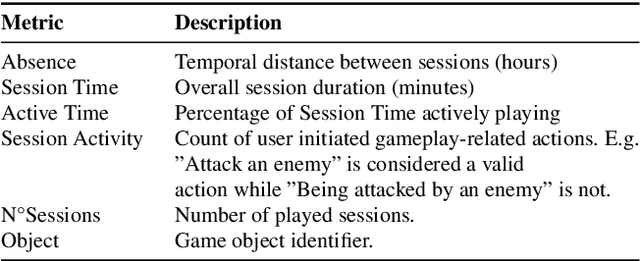

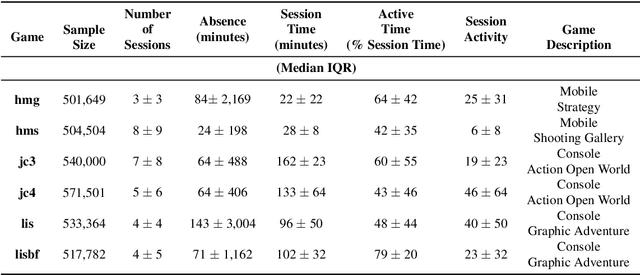
Abstract:Incentive salience attribution can be understood as a psychobiological process ascribing relevance to potentially rewarding objects and actions. Despite being an important component of the motivational process guiding our everyday behaviour its study in naturalistic contexts is not straightforward. Here we propose a methodology based on artificial neural networks (ANNs) for approximating latent states produced by this process in situations where large volumes of behavioural data are available but no strict experimental control is possible. Leveraging knowledge derived from theoretical and computational accounts of incentive salience attribution we designed an ANN for estimating duration and intensity of future interactions between individuals and a series of video games in a large-scale ($N> 3 \times 10^6$) longitudinal dataset. Through model comparison and inspection we show that our approach outperforms competing ones while also generating a representation that well approximate some of the functions of attributed incentive salience. We discuss our findings with reference to the adopted theoretical and computational frameworks and suggest how our methodology could be an initial step for estimating attributed incentive salience in large scale behavioural studies.
From Theory to Behaviour: Towards a General Model of Engagement
Apr 27, 2020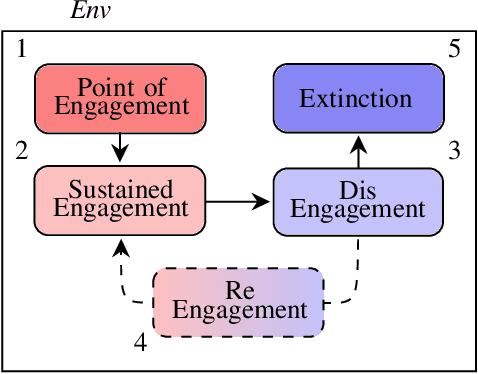
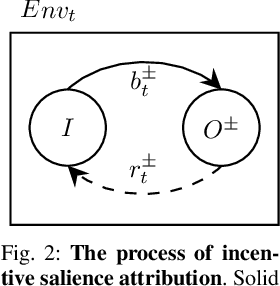
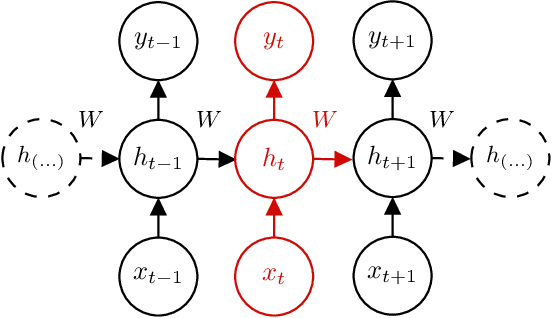
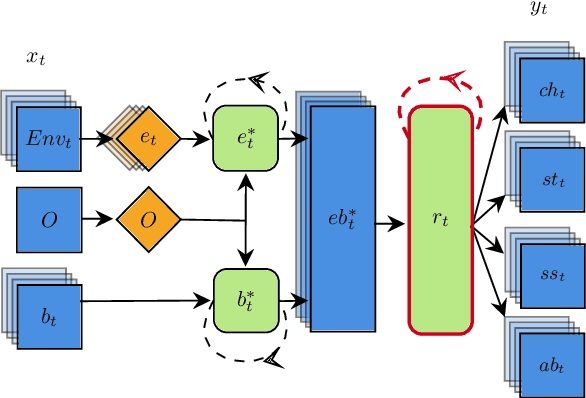
Abstract:Engagement is a fuzzy concept. In the present work we operationalize engagement mechanistically by linking it directly to human behaviour and show that the construct of engagement can be used for shaping and interpreting data-driven methods. First we outline a formal framework for engagement modelling. Second we expanded on our previous work on theory-inspired data-driven approaches to better model the engagement process by proposing a new modelling technique, the Melchoir Model. Third, we illustrate how, through model comparison and inspection, we can link machine-learned models and underlying theoretical frameworks. Finally we discuss our results in light of a theory-driven hypothesis and highlight potential application of our work in industry.
Modelling Early User-Game Interactions for Joint Estimation of Survival Time and Churn Probability
May 31, 2019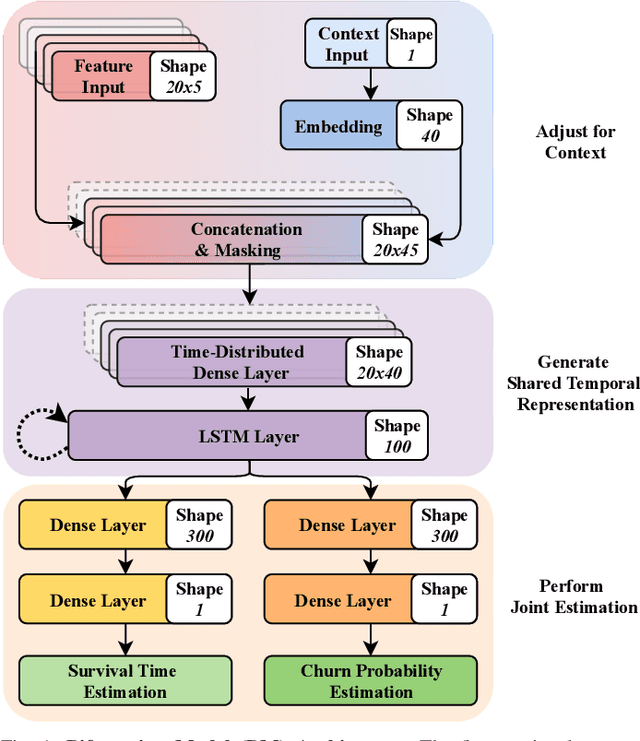
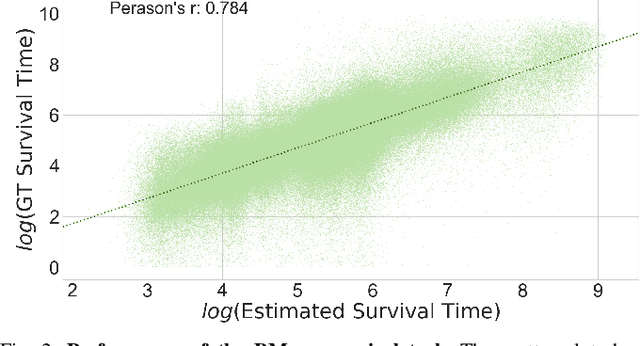
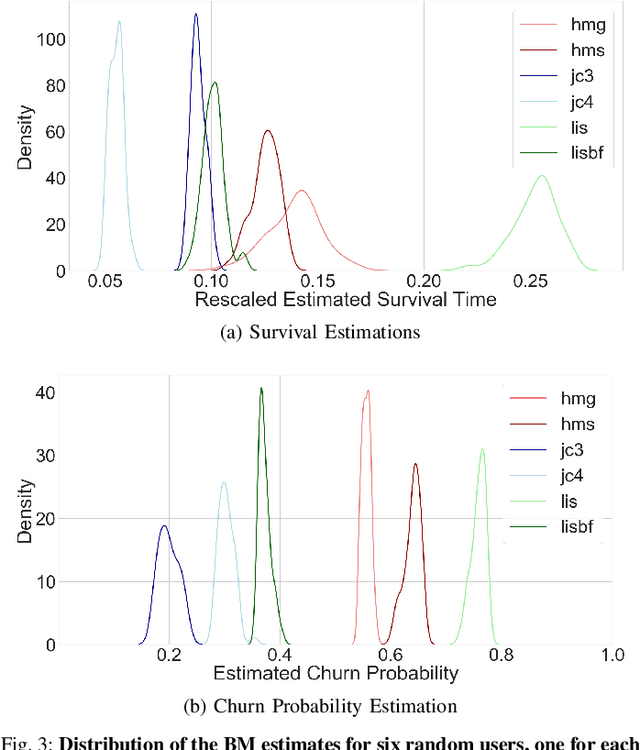

Abstract:Data-driven approaches which aim to identify and predict player engagement are becoming increasingly popular in games industry contexts. This is due to the growing practice of tracking and storing large volumes of in-game telemetries coupled with a desire to tailor the gaming experience to the end-user's needs. These approaches are particularly useful not just for companies adopting Game-as-a-Service (GaaS) models (e.g. for re-engagement strategies) but also for those working under persistent content-delivery regimes (e.g. for better audience targeting). A major challenge for the latter is to build engagement models of the user which are data-efficient, holistic and can generalize across multiple game titles and genres with minimal adjustments. This work leverages a theoretical framework rooted in engagement and behavioural science research for building a model able to estimate engagement-related behaviours employing only a minimal set of game-agnostic metrics. Through a series of experiments we show how, by modelling early user-game interactions, this approach can make joint estimates of long-term survival time and churn probability across several single-player games in a range of genres. The model proposed is very suitable for industry applications since it relies on a minimal set of metrics and observations, scales well with the number of users and is explicitly designed to work across a diverse range of titles.
Time to Die: Death Prediction in Dota 2 using Deep Learning
May 21, 2019
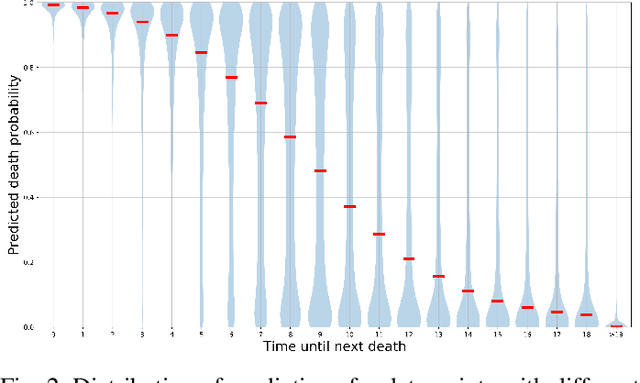
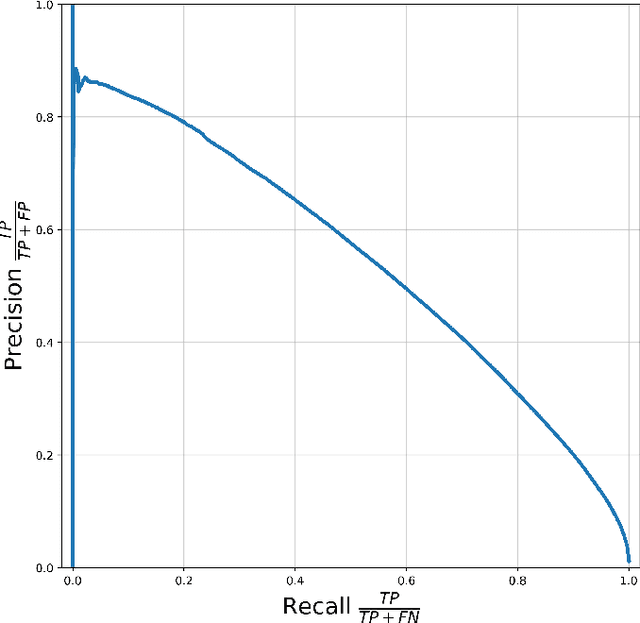
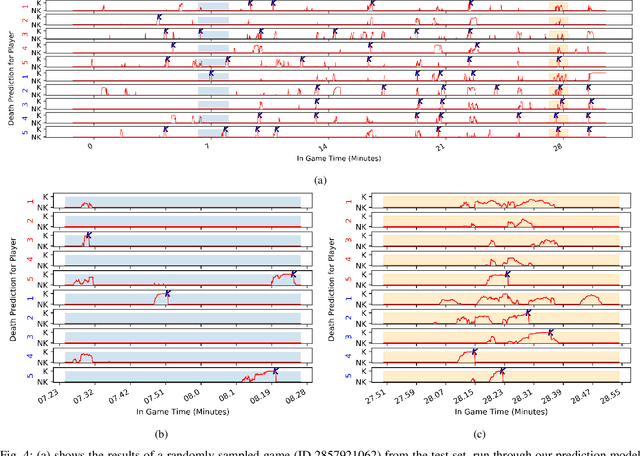
Abstract:Esports have become major international sports with hundreds of millions of spectators. Esports games generate massive amounts of telemetry data. Using these to predict the outcome of esports matches has received considerable attention, but micro-predictions, which seek to predict events inside a match, is as yet unknown territory. Micro-predictions are however of perennial interest across esports commentators and audience, because they provide the ability to observe events that might otherwise be missed: esports games are highly complex with fast-moving action where the balance of a game can change in the span of seconds, and where events can happen in multiple areas of the playing field at the same time. Such events can happen rapidly, and it is easy for commentators and viewers alike to miss an event and only observe the following impact of events. In Dota 2, a player hero being killed by the opposing team is a key event of interest to commentators and audience. We present a deep learning network with shared weights which provides accurate death predictions within a five-second window. The network is trained on a vast selection of Dota 2 gameplay features and professional/semi-professional level match dataset. Even though death events are rare within a game (1\% of the data), the model achieves 0.377 precision with 0.725 recall on test data when prompted to predict which of any of the 10 players of either team will die within 5 seconds. An example of the system applied to a Dota 2 match is presented. This model enables real-time micro-predictions of kills in Dota 2, one of the most played esports titles in the world, giving commentators and viewers time to move their attention to these key events.
Win Prediction in Esports: Mixed-Rank Match Prediction in Multi-player Online Battle Arena Games
Nov 17, 2017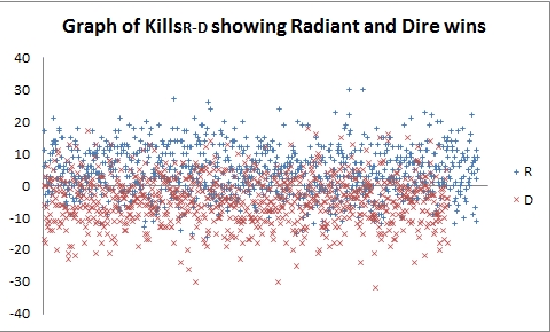
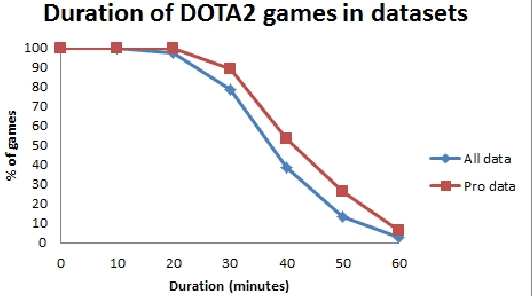
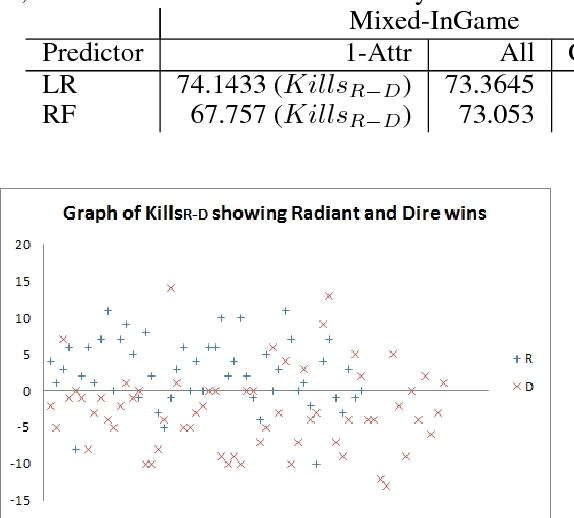
Abstract:Esports has emerged as a popular genre for players as well as spectators, supporting a global entertainment industry. Esports analytics has evolved to address the requirement for data-driven feedback, and is focused on cyber-athlete evaluation, strategy and prediction. Towards the latter, previous work has used match data from a variety of player ranks from hobbyist to professional players. However, professional players have been shown to behave differently than lower ranked players. Given the comparatively limited supply of professional data, a key question is thus whether mixed-rank match datasets can be used to create data-driven models which predict winners in professional matches and provide a simple in-game statistic for viewers and broadcasters. Here we show that, although there is a slightly reduced accuracy, mixed-rank datasets can be used to predict the outcome of professional matches, with suitably optimized configurations.
Rapid Prediction of Player Retention in Free-to-Play Mobile Games
Jul 12, 2016



Abstract:Predicting and improving player retention is crucial to the success of mobile Free-to-Play games. This paper explores the problem of rapid retention prediction in this context. Heuristic modeling approaches are introduced as a way of building simple rules for predicting short-term retention. Compared to common classification algorithms, our heuristic-based approach achieves reasonable and comparable performance using information from the first session, day, and week of player activity.
Skill-Based Differences in Spatio-Temporal Team Behavior in Defence of The Ancients 2
Mar 24, 2016



Abstract:Multiplayer Online Battle Arena (MOBA) games are among the most played digital games in the world. In these games, teams of players fight against each other in arena environments, and the gameplay is focused on tactical combat. Mastering MOBAs requires extensive practice, as is exemplified in the popular MOBA Defence of the Ancients 2 (DotA 2). In this paper, we present three data-driven measures of spatio-temporal behavior in DotA 2: 1) Zone changes; 2) Distribution of team members and: 3) Time series clustering via a fuzzy approach. We present a method for obtaining accurate positional data from DotA 2. We investigate how behavior varies across these measures as a function of the skill level of teams, using four tiers from novice to professional players. Results indicate that spatio-temporal behavior of MOBA teams is related to team skill, with professional teams having smaller within-team distances and conducting more zone changes than amateur teams. The temporal distribution of the within-team distances of professional and high-skilled teams also generally follows patterns distinct from lower skill ranks.
Going Out of Business: Auction House Behavior in the Massively Multi-Player Online Game
Mar 24, 2016



Abstract:The in-game economies of massively multi-player online games (MMOGs) are complex systems that have to be carefully designed and managed. This paper presents the results of an analysis of auction house data from the MMOG Glitch, across a 14 month time period, the entire lifetime of the game. The data comprise almost 3 million data points, over 20,000 unique players and more than 650 products. Furthermore, an interactive visualization, based on Sankey flow diagrams, is presented which shows the proportion of the different clusters across each time bin, as well as the flow of players between clusters. The diagram allows evaluation of migration of players between clusters as a function of time, as well as churn analysis. The presented work provides a template analysis and visualization model for progression-based or temporal-based analysis of player behavior broadly applicable to games.
 Add to Chrome
Add to Chrome Add to Firefox
Add to Firefox Add to Edge
Add to Edge